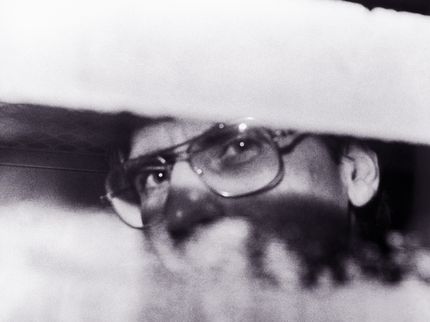No one—not even Dennis Nilsen himself—can say just how many people he killed between December of 1978 and his arrest in February of 1983. His crimes earned him a variety of nicknames: “The British Jeffrey Dahmer” given the grisly nature of the murders; “The Muswell Hill Murderer” for the North London neighborhood where he committed his deeds; And, most chilling of all, “The Kindly Killer” as Nilsen himself believed that his method of execution was humane.
Related: 6 Deadly British Serial Killers
What we do know is that Nilsen killed anywhere from a dozen to 16 men and kept their bodies in his home, sometimes for months at a time. Nilsen’s victims were students and homeless men that he met and lured back to his place, sometimes for sex or merely companionship. Booze and food were often promised. At some point during the night, Nilsen would seize upon his victim, strangling him or holding his head under water until death.

After each murder, Nilsen engaged in a series of rituals that began with bathing and clothing the victim’s body. He often posed the corpses, sometimes in a sexually suggestive manner, other times as though they were cohabiting the apartment with the corpse at rest in and armchair as Nilsen watched TV. Like Jeffrey Dahmer, Nilsen is said to have sought in each victim someone who wouldn’t leave him. He kept the corpse of his first victim, 14-year-old Stephen Holmes, under his floorboards for nearly eight months. Then, using culinary skills he learned as a cook in the army, Nilsen would dismember the bodies—often burning the remains in an outdoor fire pit in his garden.
Related: 25 Books About the World’s Most Famous Serial Killers
An admitted necrophiliac, Nilsen claimed to have masturbated while viewing the dead bodies of several of his victims, and to have engaged in sex acts with at least six different corpses—though he was insistent that he never penetrated any of the bodies. Even before his murders, Nilsen’s sexual fantasies revolved around partners who were dead or passive to the point of unconsciousness, and sometimes drew inspiration from the painting The Raft of the Medusa by Theodore Gericault in which an old man holds the nude, limp body of a younger man.

Nilsen’s upstairs residence in Muswell Hill
Nilsen’s arrest in February of 1983 was precipitated by his move to an upstairs flat in 1981. Without a spacious garden out back, he found it increasingly difficult to dispose of his corpses. Since he occupied an attic room, he could no longer conceal the bodies beneath the floorboards.
So Nilsen attempted to dispose of some body parts by flushing them down the drain. The approach blocked up the building’s sewer system, leading to complaints from tenants—including, oddly, Nilsen himself. Plumbers were called to clear the blockage. They soon discovered the pipes were packed with bone fragments and a fatty substance that looked like chicken.
Related: 6 Serial Killer Movies Based on Real-Life Murderers
The source was traced to the top flat in the building. Police were alerted, and when they raided Dennis Nilsen’s home they found suitcases full of human organs and bags of human remains concealed in his rooms. Three human heads were also found in a cupboard. Nilsen apologized to the police for not being able to tell them the exact number of murders he had committed, yet he offered up remarkably detailed confessions as to what he did with the bodies—among other things, he admitted to boiling the heads, hands, and feet of several of his victims.

Nilsen was brought to trial in the fall of 1983. He was found guilty of his crimes and sentenced to life in prison. Currently, he resides in a maximum-security prison in the East Riding of Yorkshire. After his incarceration, Nilsen wrote a 400-page autobiography entitled The History of a Drowning Boy, which remains unpublished. When asked about the murders, Nilsen once said, “I caused dreams which caused death … this is my crime.”
Photos (in order): Murderpedia; Wikimedia Commons; Keystone / Getty Images; Dave Benett / Getty Images
